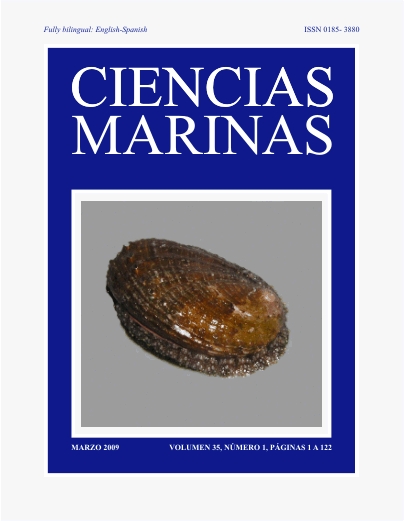Fatty acid composition of juvenile abalone (Haliotis tuberculata coccinea) fed formulated diets containing various n3 HUFA levels
Main Article Content
Abstract
The effect of feeding different levels of n3 highly unsaturated fatty acids (HUFA) on the fatty acid profile was evaluated in soft tissue from juvenile Haliotis tuberculata coccinea. Five diets were formulated with different oil sources (palm, colza, fish, sunflower, and soybean), containing from 2.52% to 12.33% n3 HUFA, while fresh Ulva rigida was used as reference diet. The different diets were provided to groups of 20 abalone during 120 days in independent triplicates. Though no significant differences in growth (P < 0.05) were registered among all formulated diets, a tendency to accumulate different fatty acids in muscle was observed. The proximate composition of abalone tissue showed that the diet containing 6.8% HUFA resulted in higher lipid accumulation in muscle tissue than that observed in the other treatments. Our results suggest that H. tuberculata coccinea, contrary to to abalone species from colder environments, does not have high HUFA requirements; however, the fatty acid profile of muscle and viscera tissues of abalone may be modulated by the fatty acid content in diets.
Downloads
Article Details
This is an open access article distributed under a Creative Commons Attribution 4.0 License, which allows you to share and adapt the work, as long as you give appropriate credit to the original author(s) and the source, provide a link to the Creative Commons license, and indicate if changes were made. Figures, tables and other elements in the article are included in the article’s CC BY 4.0 license, unless otherwise indicated. The journal title is protected by copyrights and not subject to this license. Full license deed can be viewed here.

